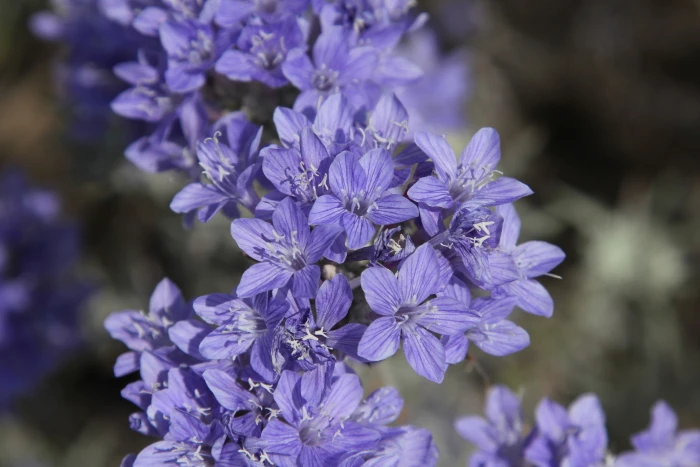Giant Woollystar
(Eriastrum densifolium)
Giant Woollystar (Eriastrum densifolium)
/
/

Pacific Southwest Region U.S. Fish and Wildlife Service
Public domain
Image By:
Pacific Southwest Region U.S. Fish and Wildlife Service
Recorded By:
Copyright:
Public domain
Copyright Notice:
Photo by: Pacific Southwest Region U.S. Fish and Wildlife Service | License Type: Public domain | License URL: https://creativecommons.org/public-domain/ | Uploader: Flickr upload bot | Publisher: Wikimedia Commons | Title: Eriastrum_densifolium_sanctorum.jpg | Notes: ==Summary== {{Information |Description=Gymnocalycium saglionis c-3195. Argentina. Photographed Park Conservatory, Seattle, Washington. |Source=Photo by [[User:Jmabel|Joe Mabel]] |Date=2009-03-27 |Author=[[U


























































Estimated Native Range
Climate Requirements for Ridgewood, New Jersey
| This Plant | Your Site | Plant Suitability for Your Location | ||
|---|---|---|---|---|
| • Precipitation | 3" - 48" | 48" | Aquatic | Aquatic |
| • High Temp. | 68°F - 106°F | 86°F | Your summer temperatures are normal for this plant. | Excellent |
| • Low Temp. | 9°F - 46°F | 21°F | Your winter temperatures are normal for this plant | Excellent |
This plant may not grow well at your location - your precipitation is too high.
Summary
Eriastrum densifolium, commonly known as Giant Woollystar, is a semi-deciduous perennial subshrub or herb. It is native to the chaparral and sandy soils of California and Baja California, particularly in the Mojave and Sonoran deserts. It typically grows to a height of 10-50 centimeters with an erect stem and foliage that ranges from slightly hairy to densely woolly, contributing to its gray-green appearance. The narrow, spike-shaped leaves have pointed lobes, and the plant is topped with a bunched inflorescence that includes woolly bracts and distinctive funnel-shaped, flat-faced flowers. These flowers, blooming from May to August, are 1 to 3 centimeters long with a face up to 3 or 4 centimeters wide, and their color ranges from white to a bright, striking blue, occasionally featuring longitudinal pinstripes. The protruding stamens add to the visual interest of the blooms.
Giant Woollystar is valued for its drought tolerance and striking blue flowers, which can add a splash of color to rock gardens, xeriscapes, and native plant landscapes. It is often used in restoration projects due to its adaptability to poor, sandy soils and its ability to thrive with minimal water once established. In cultivation, it requires full sun exposure and well-drained soils. While it is generally low-maintenance, it can be susceptible to root rot if overwatered. There are no widely known popular garden cultivars of this species, and it is not typically associated with aggressive roots or diseases. However, gardeners should be aware that it may not compete well with more aggressive plants and may require some protection from competition.CC BY-SA 4.0
Giant Woollystar is valued for its drought tolerance and striking blue flowers, which can add a splash of color to rock gardens, xeriscapes, and native plant landscapes. It is often used in restoration projects due to its adaptability to poor, sandy soils and its ability to thrive with minimal water once established. In cultivation, it requires full sun exposure and well-drained soils. While it is generally low-maintenance, it can be susceptible to root rot if overwatered. There are no widely known popular garden cultivars of this species, and it is not typically associated with aggressive roots or diseases. However, gardeners should be aware that it may not compete well with more aggressive plants and may require some protection from competition.CC BY-SA 4.0
Plant Description
- Plant Type: Subshrub, Herb
- Height: 1-1.5 feet
- Width: 1-1.5 feet
- Growth Rate: Moderate
- Flower Color: Purple
- Flowering Season: Fall, Spring, Summer
- Leaf Retention: Semi-Deciduous
Growth Requirements
- Sun: Full Sun
- Water: Low, Very Low
- Drainage: Fast
Common Uses
Bee Garden, Butterfly Garden, Drought Tolerant, Low Maintenance, Rock Garden, Showy Flowers
Natural Habitat
native to the chaparral and sandy soils of California and Baja California, particularly in the Mojave and Sonoran deserts
Other Names
Common Names: Dense Eriastrum
Scientific Names: Eriastrum densifolium, Gilia densiflora, Navarretia densifolia var. lanata, Navarretia densifolia subsp. eudensifolia
GBIF Accepted Name: Eriastrum densifolium (Benth.) Mason